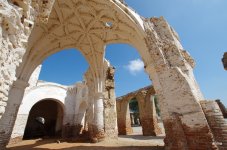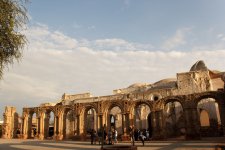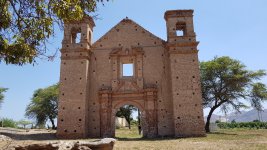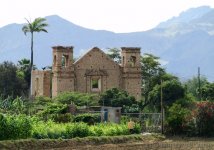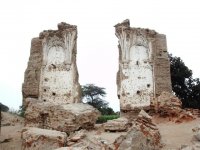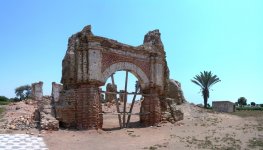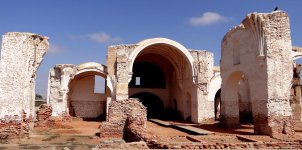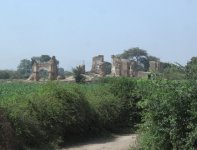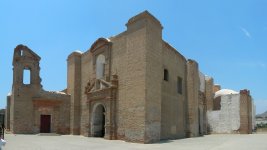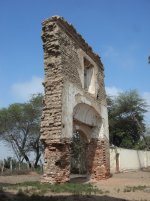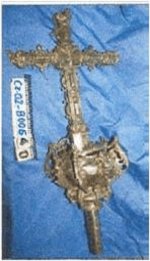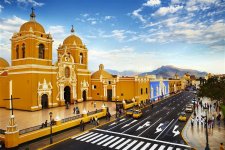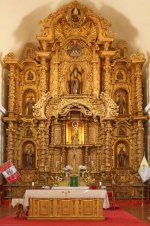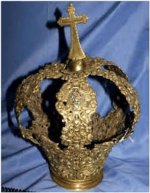KANACKI
Bronze Member
- Mar 1, 2015
- 1,445
- 5,933
- Primary Interest:
- All Treasure Hunting
Hello All
Well not quite lost or dead but interesting the same. It is a site that is virtually unknown to western English speaking people. And hardly known to Spanish Speaking People with virtually no tourists visiting the Spanish Colonial site. And hardly anything written about the site posted on the internet. Its history and importance has fallen under the radar. In Peru today such places like Sana or some times spelled Zana are no so well appreciated as the main tourist dollars is from pre Columbian Inca sites that has captured the worlds imagination. Zana is mere living village today surrounded by the ruins of a once great Spanish City. Boasting nine churches, convents and monasteries. Zana sat in one of few very fertile valleys in Northern Peru.
Sana Founded around 1565 the Spanish Colonial City to rival Lima the "The City of Kings" Growth was fueled by Ecomindas granted to 33 Spaniards and one Italian by the King of Spain. With this Growth several Catholic Orders grew rich also from the prosperity generated by the rich gold and mines to the east, Cattle, food production of Sugar.
Sana had about 121 years of uninterpreted growth. Its religious orders in the city grew wealthy on that wealth. The Franciscans, Augustinians and Dominicans especially had ostentatious displays of gold and silver in their churches. Totally unafraid of the outside world as they had become the masters of their domain quietly paying the Royal firth to the King of Spain.
It is mind boggling to imagine how much Gold and Silver passed through this city either via land or sea to the Royal Mint to Lima then shipped to Panama then to Havana onto Spain. It was all part of the golden cash cow and Spain milked it for all its worth. This golden gravy train attracted the attentions of other Countries who wanted part of the action so in doing so shaped world history in the endless wars to dominate it.
In 1686 William Knight and Edward Davis and a motley band of Buccaneers raided the coast of Northern Peru and marched several miles inland and captured and looted Sana and its great churches. The silver and gold looted amounted in today's values of approximately 250 million. The fate of which sparked treasure legends itself.
Sana had been given a bloody nose. While shocked at the invasion by prates life at Sana went back to business as usual until 34 years later the Sana received its final death blow. In 1720 most of city of Sana was destroyed not by fire or earthquake but by flood. Most of the town was buried and destroyed ...Hundreds drowned and Churches and cathedrals badly damaged. So destroy was the this once glorious city it was left abandoned and survivors build a new City a few miles away safe from flooding. For many years the site became a neglected ruin. Today the new village of Sana has sprang up in among the ruins of the old Spanish City.
Here below in one of the few original Spanish houses to survive the flood and time itself.
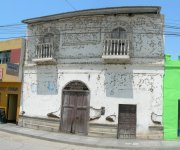
Here is one of old convent ruins below.
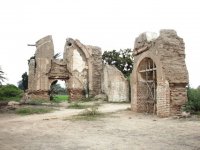
Kanacki
Well not quite lost or dead but interesting the same. It is a site that is virtually unknown to western English speaking people. And hardly known to Spanish Speaking People with virtually no tourists visiting the Spanish Colonial site. And hardly anything written about the site posted on the internet. Its history and importance has fallen under the radar. In Peru today such places like Sana or some times spelled Zana are no so well appreciated as the main tourist dollars is from pre Columbian Inca sites that has captured the worlds imagination. Zana is mere living village today surrounded by the ruins of a once great Spanish City. Boasting nine churches, convents and monasteries. Zana sat in one of few very fertile valleys in Northern Peru.
Sana Founded around 1565 the Spanish Colonial City to rival Lima the "The City of Kings" Growth was fueled by Ecomindas granted to 33 Spaniards and one Italian by the King of Spain. With this Growth several Catholic Orders grew rich also from the prosperity generated by the rich gold and mines to the east, Cattle, food production of Sugar.
Sana had about 121 years of uninterpreted growth. Its religious orders in the city grew wealthy on that wealth. The Franciscans, Augustinians and Dominicans especially had ostentatious displays of gold and silver in their churches. Totally unafraid of the outside world as they had become the masters of their domain quietly paying the Royal firth to the King of Spain.
It is mind boggling to imagine how much Gold and Silver passed through this city either via land or sea to the Royal Mint to Lima then shipped to Panama then to Havana onto Spain. It was all part of the golden cash cow and Spain milked it for all its worth. This golden gravy train attracted the attentions of other Countries who wanted part of the action so in doing so shaped world history in the endless wars to dominate it.
In 1686 William Knight and Edward Davis and a motley band of Buccaneers raided the coast of Northern Peru and marched several miles inland and captured and looted Sana and its great churches. The silver and gold looted amounted in today's values of approximately 250 million. The fate of which sparked treasure legends itself.
Sana had been given a bloody nose. While shocked at the invasion by prates life at Sana went back to business as usual until 34 years later the Sana received its final death blow. In 1720 most of city of Sana was destroyed not by fire or earthquake but by flood. Most of the town was buried and destroyed ...Hundreds drowned and Churches and cathedrals badly damaged. So destroy was the this once glorious city it was left abandoned and survivors build a new City a few miles away safe from flooding. For many years the site became a neglected ruin. Today the new village of Sana has sprang up in among the ruins of the old Spanish City.
Here below in one of the few original Spanish houses to survive the flood and time itself.

Here is one of old convent ruins below.

Kanacki


